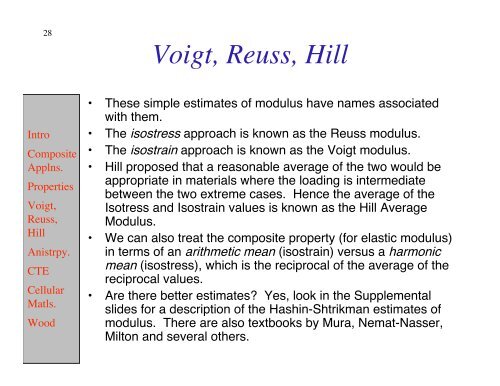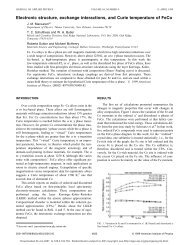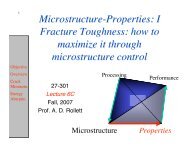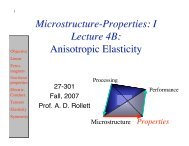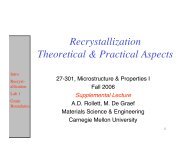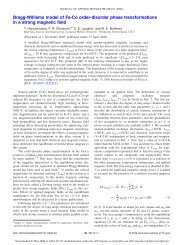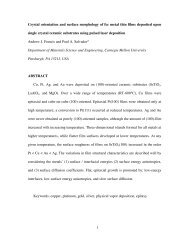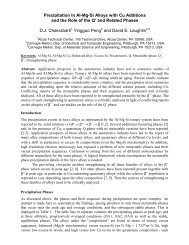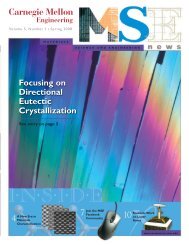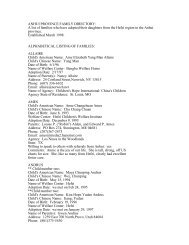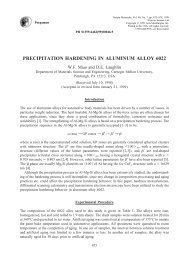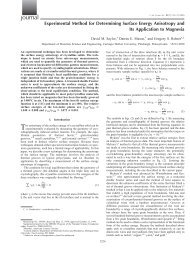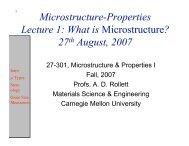L7 composites - Materials Science and Engineering
L7 composites - Materials Science and Engineering
L7 composites - Materials Science and Engineering
Create successful ePaper yourself
Turn your PDF publications into a flip-book with our unique Google optimized e-Paper software.
28<br />
Intro<br />
Composite<br />
Applns.<br />
Properties<br />
Voigt,<br />
Reuss,<br />
Hill<br />
Anistrpy.<br />
CTE<br />
Cellular<br />
Matls.<br />
Wood<br />
Voigt, Reuss, Hill<br />
• These simple estimates of modulus have names associated<br />
with them.<br />
• The isostress approach is known as the Reuss modulus.<br />
• The isostrain approach is known as the Voigt modulus.<br />
• Hill proposed that a reasonable average of the two would be<br />
appropriate in materials where the loading is intermediate<br />
between the two extreme cases. Hence the average of the<br />
Isotress <strong>and</strong> Isostrain values is known as the Hill Average<br />
Modulus.<br />
• We can also treat the composite property (for elastic modulus)<br />
in terms of an arithmetic mean (isostrain) versus a harmonic<br />
mean (isostress), which is the reciprocal of the average of the<br />
reciprocal values.<br />
• Are there better estimates? Yes, look in the Supplemental<br />
slides for a description of the Hashin-Shtrikman estimates of<br />
modulus. There are also textbooks by Mura, Nemat-Nasser,<br />
Milton <strong>and</strong> several others.


